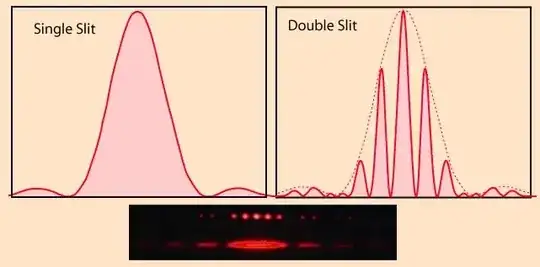For incoherent light sources, they are passed through a single slit first. The interference pattern of the single slit then modulates the intensity of the double slits' interference pattern.
But what about lasers? They don't need to be passed through a single slit first, so would their intensity curve be modulated by a single slit 'envelope'?
Here is the graph we expect if passed through a single slit only (right), and a single followed by double slits (left)
